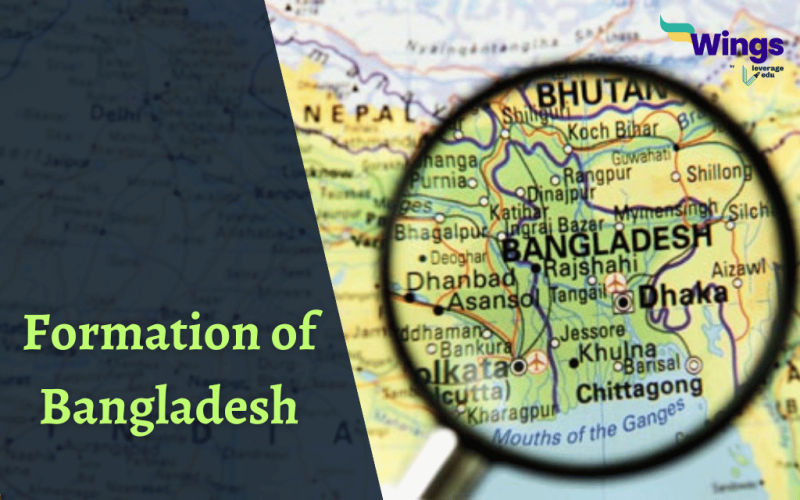Bangladesh is one of those nations whose legacy of independence is painful and filled with blood. Even after gaining independence from the Britishers and parting from India, it took a long time for Bangladesh to become a self-ruling nation. Let’s explore the story of the formation of Bangladesh after India and Pakistan’s partition to understand this better.
Table of Contents
Bengal After Partition
Earlier known as the Pakistani Bengal, it was established in 1955 as a part of Pakistani province. The Prime Minister of Pakistan Mohammad Ali of Bogra renamed East Bengal to East Pakistan under the One Unit Policy.
The Pakistani Monarchy was bereaved of its status and the Islamic Republic of Pakistan was set up in this new province. The country was released of all bonds from India on the 14th of August 1947 just as Pakistan.

Also Read: First India Pakistan War of 1947-1948: Causes and Aftermath
The Bengali Language Movement (14th Aug 1947-5th Jan 1968)
Following the partition, on the 08th of December the students of Dhaka University demanded that Bengali should be their official language. In lieu of this, organizers planned a strike for the same on the 11th of March the following year. On the contrary, Mohammad Ali Jinnah declared only Urdu to be the official language of the country.
On the 30th of January 1952, the students started a Bhasha Andolon Movement. Between the 21st to 23rd of February 1952, 10 students died in the clashes between the police and the students. As of the outrage, on the 12th March 1954, a new was signed by the constituent assembly of Pakistan. This book of governance had both Urdu and Bengali listed as the national languages.

Also Read: Bengal Partition: A Tale of Division between Hearts and Lands
East Pakistan Government formation (6 Jan 1968-25 Mar 1971)
As the newly formed state needed governance, the interim government held the parliamentary elections in East Pakistan in 1970. The elections were won by the Awami League political party which was promoting the agenda of complete autonomy of Bangladesh. The interim government of the Republic of Pakistan and the army stopped the party from governing due to concerns.
They arrested the party leaders and brutally curbed the protest that followed. This led to East Pakistani residents taking refuge in India. Pakistan fired on the Bengali demonstrators in West Pakistan and killed around 1,000 people on 24 March 1971.

Battle of East and West Pakistan (26 Mar 1971-16 Dec 1971)
President Agha Khan declared a state of emergency on 25 March 1971 in the East Pakistan region. Soon, troops of West Pakistan entered the state and organised a military attack on the protestors and supporters of an autonomous state. On the 14th of April in the same year, the protestors declared East Pakistan an independent state.
However, West Pakistan received support from Saudi Arabia, Turkey, Jordan, Malaysia, Libya, and Iran. East Pakistan bagged support from India and Russia for their cause and nationalist movement. The UN General Assembly thus ordered a ceasefire on 15 December 1971. The next day, troops of West Pakistan along with civilians surrendered weapons to Indian soldiers.

Also Read: Timeline of India-Pakistan War
Formation of Bangladesh
The death toll of the war was five lakh Bengalis, five thousand Pakistani soldiers, and one thousand Indian soldiers. After this massive bloodshed on the 17th of December 1971, the people formed a new nation of Bangladesh.
The formation of Bangladesh was followed by complete independence from Pakistani troops, the formation of a new constitution and an independently elected government. The condition of governance in Bangladesh as well as neglect of their requests was due to decentralised power in Pakistan after Jinnah and the Assassination of Liaqat Ali Khan.
Relevant Blogs
Therefore, the unrest in the political state of Pakistan watered the seeds of protests with reasons to seek an independent nation-state in Bangladesh. If you want to read more articles like this, you can get Short notes on the Modern History of India here. Also, you can visit our general knowledge page on Indian History!
 One app for all your study abroad needs
One app for all your study abroad needs













